All images by the ICZ
effect
Presented by The Institute of Critical Zoologists
Robert Zhao Renhui’s debut museum exhibition in the United States features two bodies of work that highlight the ubiquitous presence of flies and butterflies in our environment. Inspired by scientific methods of categorizing fly types, Zhao Renhui appropriates scientific tools to explore the boundaries, systems, and methods humans use to control fly populations, stemming from a dismissive attitude that belies their necessity. While the fly is seen as a nuisance, the Monarch Butterfly, on the other hand, is seen as a beautiful creature; it is a symbol of transformation.
In Effects, suspended fly traps and lures reflect Zhao Renhui’s fascination with the countless devices and methodologies invented by humans to exterminate insects. His investigation of fly extermination methods continues with one hundred different fly pheromones applied to photographic panels in a warm yellow hue that references the color of commercially produced flytraps. In He Counts The Stars And Calls Them All By Name, a large photographic lexicon documenting 4,784 specimens from a single family of flies (the Hover fly), Zhao Renhui draws the viewer’s attention to their ubiquitous presence in our ecosystem despite their near invisibility in human consciousness.
Zhao Renhui’s work exposes the overlooked contradictions, assumptions, and tensions inherent in our relationship with nature. Rendering the unseen visible, and the ignored critical, this multidisciplinary exhibition amplifies the intersections of insect and human, and natural and urbanized environments.
For more information on the exhibition, click here.
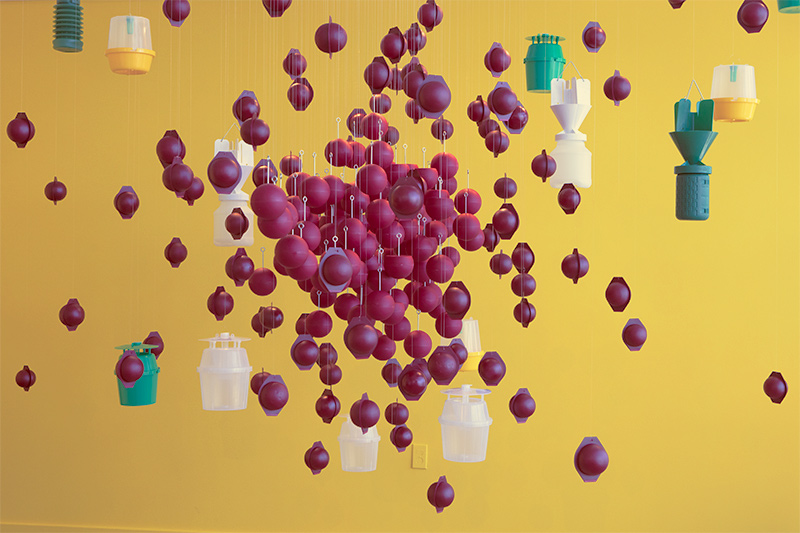 The Fruits of Creation; Japanese Beetles, Varroa Mites, Apple Maggots, Pecan Weevil, White Pine Weevil
The Fruits of Creation; Japanese Beetles, Varroa Mites, Apple Maggots, Pecan Weevil, White Pine Weevil
450 insect traps from America
Dimensions Variable
2019
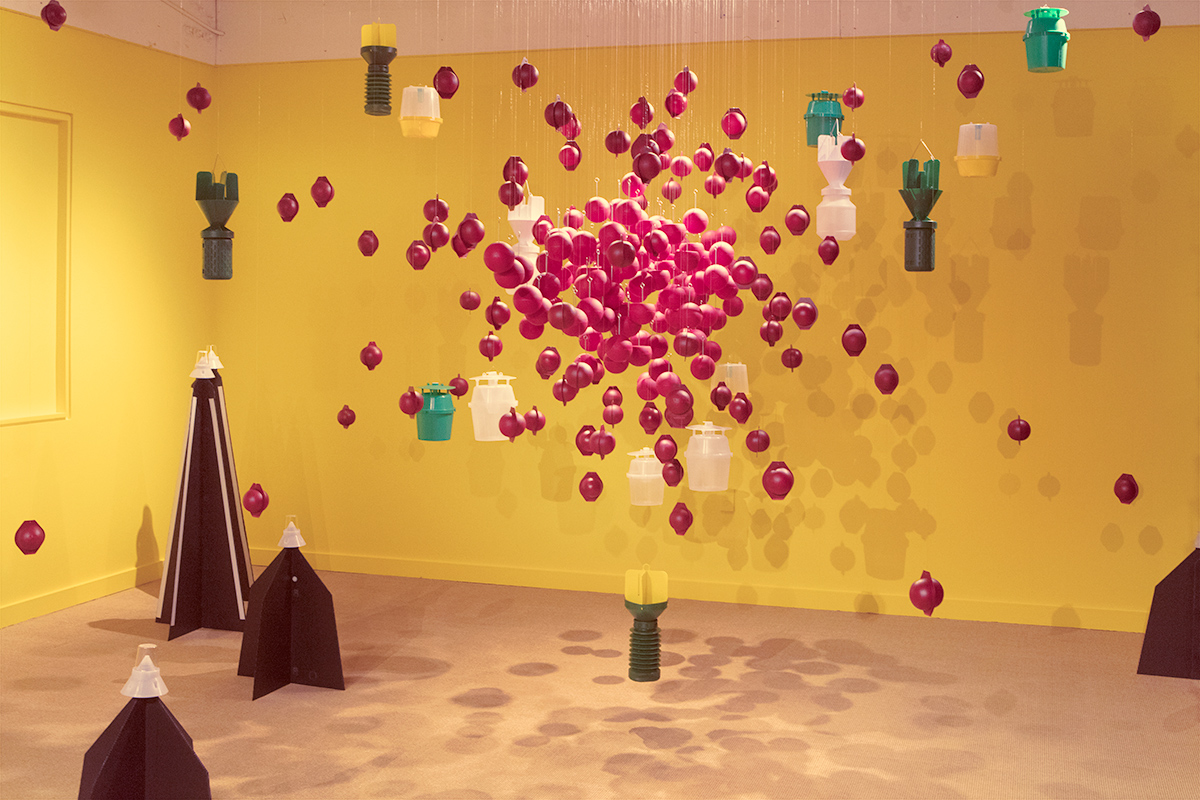
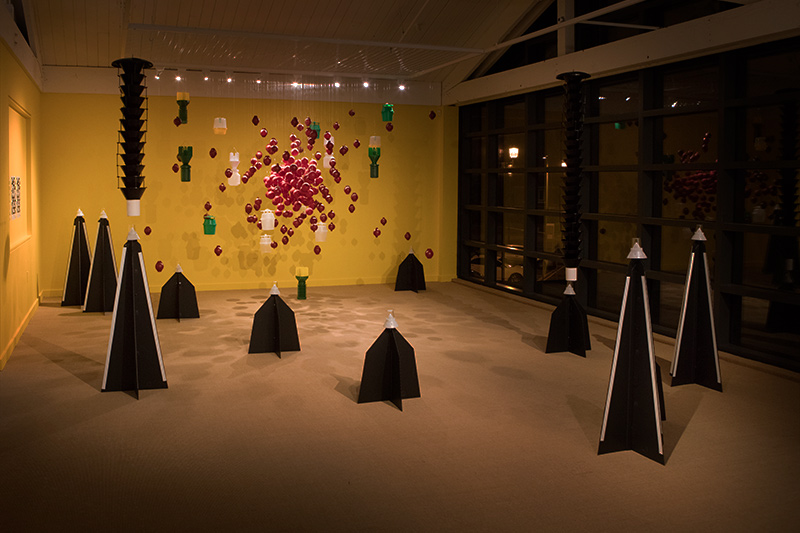
 Photographs for Insects, 2019
Photographs for Insects, 2019
100 Archival Digital Print coated with insect pheromones, 21cm x 30cm each
1 Archival Digital Print, 111cm x 74cm
Up to 200 pheromones are available for farmers to lure, trap and detect pests that might potentially destroy their crops. In these 100 yellow panels, 100 different insect pheromones have been applied to the surface of the photographs. Insect traps are yellow because insects are drawn to this citrusy colour. It is believed yellow is a fly's favourite colour.
Almond moth
American hornet moth
Apple clearwing moth
Apple maggot
Army cutworm
Armyworm
Arthurs sunflower moth
Artichoke plume moth
Australian bollworm
Banded sunflower moth
Beet armyworm
Black cutworm
Black gum borer
Blackheaded fireworm
Blueberry leafroller
Boll weevil
Brown mamorated stink bug
Cabbage looper
Carob moth
California red scale
Cherry bark tortrix
Cherry fruit worm
Cigarette beetle
Banded ash borer
Lilac/Ash borer
Oak borer
Peachtree borer
Rhododendron borer
Clover cutworm
Codling moth
Cotton bollworm
Cotton leafworm
Cranberry girdler
Currant clearwing moth
Diamondback moth
Dingy cutworm
Dogwood borer
Douglas fir tussock moth
Elm bark beetle
European corn borer: Iowa strain
European corn borer: New York strain
European grape berry moth/Grape moth
European grape vine moth
European leafroller
European pine shoot borer
Eyespotted bud moth
Fall armyworm
Fall armyworm
False codling moth
Filbertworm
Fruittree leafroller
Fruittree tortrix
Grape tortrix
Grape root borer
Gypsy moth
Hickory shuckworm
Honey bee
Honeydew moth
Indian meal moth/Raisin moth
Lacanobia fruitworm
Leek moth
Lesser appleworm
Lesser peachtree borer
Light brown apple moth
Macadamia borer
Mediteranean fruit fly
Mimosa webworm
Nantucket pine tip moth
Nun moth
Obliquebanded leafroller
Obliquebanded leafroller
Old world bollworm
Olive fruit fly (non-gender)
Olive fruit fly (spiroketal-male)
Olive moth/Citrus flower moth
Omnivorous leafroller
Orange tortrix
Oriental fruit moth
Pale western cutworm
Pananthrene asilipennis
Peach twig borer
Pear leafroller
Pecan nut casebearer
Pepper weevil
Pink bollworm
Pitch pine moth
Plum fruit moth
Potato moth
Redbanded leafroller
San Jose scale
Sequoia pitch moth
Southern armyworm
Southwestern corn borer
Southwestern pine tip moth
Soybean looper
Speckled green fruitworm
Spodoptera sunia
Spotted fireworm
Spotted tentiform leafminer
Spotted wing drosophila
Spruce budworm
Squash vine borer
Strawberry crown moth
Summerfruit tortrix
Sunflower moth
Threelined leafroller
Tobacco cutworm
Tobacco budworm
Tomato pinworm
Tufted apple bud moth
Variegated cutworm
Variegated leafroller
Viburnum borer/Holly borer
Viburnum crownborer
Vine mealybug
Western bean cutworm
Western poplar clearwing moth
Blackberry clearing borer
Clearwing chestnut borer
Persimmon borer
Raspberry clearwing borer
Raspberry crown borer
Western pine shoot borer
Wheat head armyworm

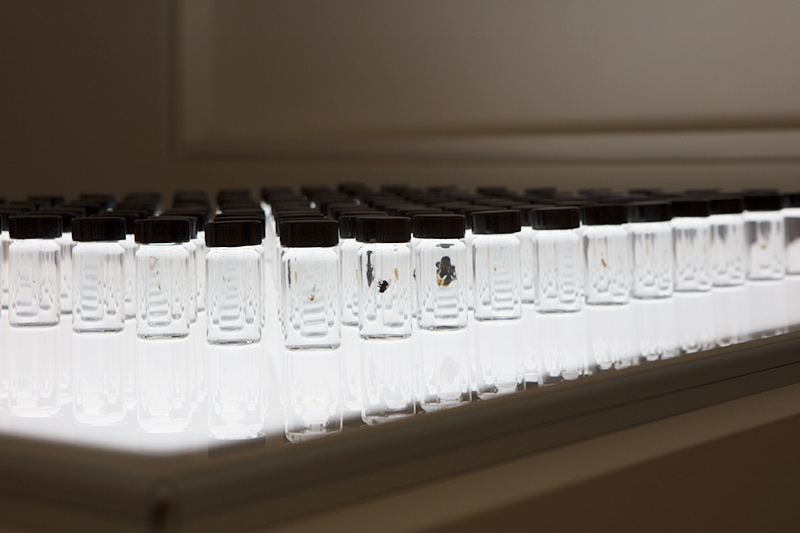 Los Angeles, 2019
Los Angeles, 2019
120 Glass Bottles, Ethyl Alcohol, Found Insects
Insects collected from the curator’s car, John Silvis, after a night drive at Newport Beach, LA.
 He counts the stars and call them all by name
He counts the stars and call them all by name
2.1m x 1.5m
Chromogenic Color Print, face mounted on Plexiglass, Framed
A family portrait photograph of 4784 flies from a single family of flies. Each fly is meticulously labelled with information of its provenance and some of these flies mimics/pretends to be other insects like bees and wasps to cheat predators.
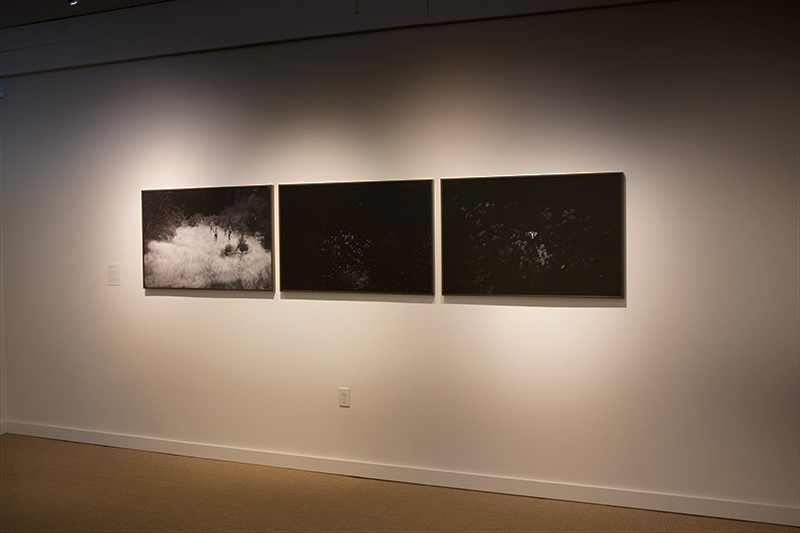
Effect
Lange’s Metalmark, Monarchs and the mysterious Christmas Island Swell Moths
Although these butterflies and moths looks almost the same with their bright orange wings, they are treated and viewed very differently because of the situations they find themselves in.
The Lange’s Metalmark is an endangered butterfly that is endemic to California. The butterfly is only found in the Antioch Dunes National Wildlife Refuge. In 2013, only 78 individuals were counted by volunteers. The count involves volunteers walking in a straight line, adjacent to one another, and using a stick to flush the butterflies out of the weeds. In Antioch, more than two dozen species of plants and animals existed nowhere else in the world except in the sand dunes, federal biologists said. They began to disappear in the 19th century as development encroached from the south and workers began hauling away sand to manufacture bricks.
Only three species remain in the Dunes, - the Lange's metalmark, the Antioch dunes evening primrose and the Antioch wallflower - and all are on the federal endangered species list. The colorful Lange's metalmark has only 10 days of life to mate and lay eggs as it dodges an army of lip-smacking predators. In 1980, the Antioch dunes became a national wildlife refuge, the first in the United States specifically designated for the protection of an insect. Since then, the Lange's metalmark population has fluctuated but generally headed upward, from 154 in 1986 to 2,342 in 2000. The numbers plummeted for several years after that, and nobody is sure why. One problem is that once abundant native buckwheat, the metalmark caterpillar's favorite food, is being choked out by weeds. also appear to be at work. Biologists and volunteers spends many hours every week pulling weeds and counting the butterflies.
Monarchs arrive in California each winter. There, migrating western monarch butterflies nestle among the state’s coastal forests, traveling from as far away as Idaho and Utah only to return home in the spring. In 2019, there is an 86% drop in the number of migrating butterflies. In 2017, scientists estimated that the monarch butterfly population in western North America had a 72 percent chance of becoming near extinct in 20 years. Monarchs require milkweed, a herbaceous plant that grows throughout the United States and Mexico, for breeding and migration. Acreage of milkweed, though, has been declining in recent years because of pesticide use and urban development.
Every monsoon season on Christmas Island, thousands of Swell Moths crowd around the Berrya cordifolia tree. It is a spectacle that lasts only for a day or two. Little is known about this spectacle. Christmas Island is also home to other more charismatic species so little attention is paid to these moths. Every monsoon season, millions of red crabs swarm to the beach of the island, covering the island in a great red splash. These Swell Moths feed exclusively on the tree Berrya cordifolia. The tree and the moth are found only in Sri Lanka, India and Christmas Island. It is hard to say if the tree and the moths are native or introduced to Christmas Island.
To see more of the series Effect, click here.
Copyright 2019, Institute of Critical Zoologists